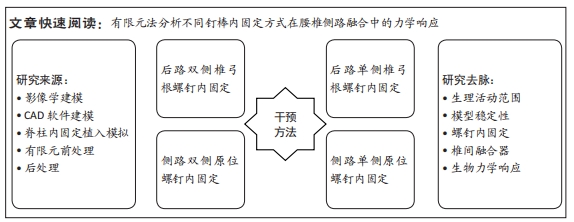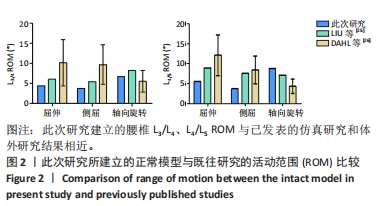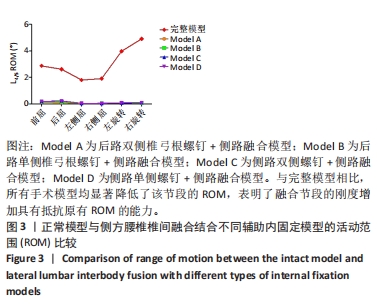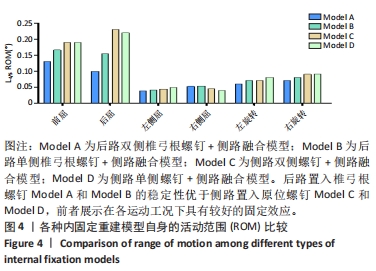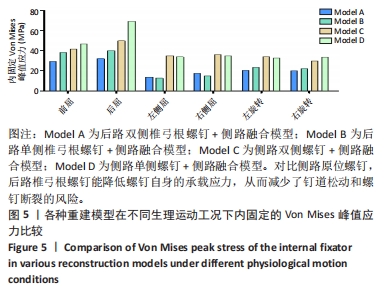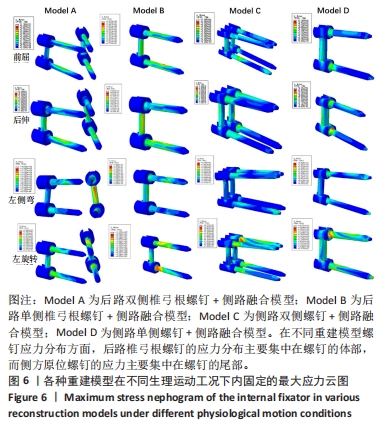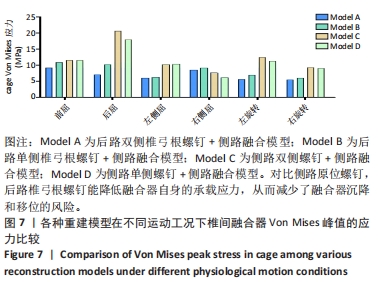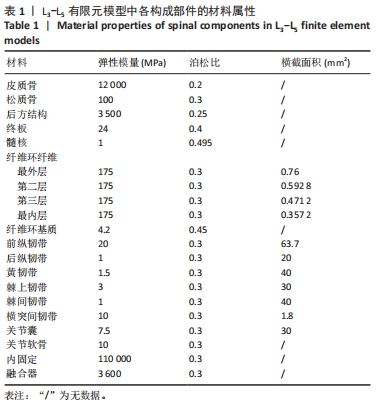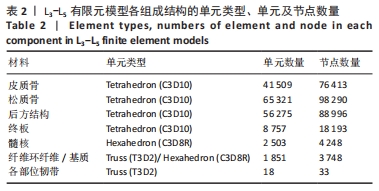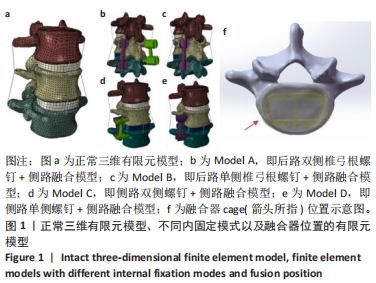[1] MARCHI L, ABDALA N, OLIVEIRA L, et al. Radiographic and clinical evaluation of cage subsidence after stand-alone lateral interbody fusion. J Neurosurg Spine. 2013;19(1): 110-118.
[2] TOWERS WS, KURTOM KH. Stand-alone LLIF Lateral Cage Migration: A Case Report. Cureus. 2015;7(10):e347.
[3] RATHBONE J, RACKHAM M, NIELSEN D, et al. A systematic review of anterior lumbar interbody fusion (ALIF) versus posterior lumbar interbody fusion (PLIF), transforaminal lumbar interbody fusion (TLIF), posterolateral lumbar fusion (PLF). Eur Spine J. 2023; 32(6):1911-1926.
[4] ISSA TZ, LEE Y, LAMBRECHTS MJ, et al. Comparing Posterior Lumbar Decompression and Fusion and Transforaminal Lumbar Interbody Fusion in Lumbar Degenerative Spondylolisthesis as Assessed by the CARDS Classification System. World Neurosurg. 2023:S1878-8750(23)00520-X.
[5] CHANBOUR H, STEINLE AM, TANG AR, et al. In Single-Level, Open, Posterior Lumbar Fusion, Does Transforaminal Lumbar Interbody Fusion or Posterolateral Fusion Lead to Better Outcomes? Neurosurgery. 2023; 92(1):110-117.
[6] HIYAMA A, SAKAI D, SATO M, et al. The analysis of percutaneous pedicle screw technique with guide wire-less in lateral decubitus position following extreme lateral interbody fusion. J Orthop Surg Res. 2019;14(1):304.
[7] JI Y, ZHANG Q, SONG Y, et al. Biomechanical characteristics of 2 different posterior fixation methods of bilateral pedicle screws: A finite element analysis. Medicine (Baltimore). 2022;101(36):e30419.
[8] XU L, LIN X, WU C, et al. Is unilateral pedicle screw fixation as effective as bilateral pedicle screw fixation in transforaminal lumbar interbody fusion: a meta-analysis of randomized controlled trials. Eur Spine J. 2023;32(2):700-711.
[9] WU J, HAN Y, XU H, et al. Biomechanical comparison of spinal column shortening - a finite element study. BMC Musculoskelet Disord. 2022;23(1):1122.
[10] CHOI YH, KWON SW, MOON JH, et al. Lateral Lumbar Interbody Fusion and in Situ Screw Fixation for Rostral Adjacent Segment Stenosis of the Lumbar Spine. J Korean Neurosurg Soc. 2017;60(6):755-762.
[11] KUBOTA G, ORITA S, UMIMURA T, et al. Insidious intraoperative ureteral injury as a complication in oblique lumbar interbody fusion surgery: a case report. BMC Res Notes. 2017;10(1):193.
[12] WONG CE, HU HT, HUANG YH, et al. Optimization of Spinal Reconstructions for Thoracolumbar Burst Fractures to Prevent Proximal Junctional Complications: A Finite Element Study. Bioengineering (Basel). 2022;9(10):491.
[13] ZHANG J, CHEN W, WENG R, et al. Biomechanical effect of endplate defects on the intermediate vertebral bone in consecutive two-level anterior cervical discectomy and fusion: a finite element analysis. BMC Musculoskelet Disord. 2023;24(1):407.
[14] LIANG Z, CUI J, ZHANG J, et al. Biomechanical evaluation of strategies for adjacent segment disease after lateral lumbar interbody fusion: is the extension of pedicle screws necessary? BMC Musculoskelet Disord. 2020;21(1):117.
[15] CASAROLI G, GALBUSERA F, JONAS R, et al. A novel finite element model of the ovine lumbar intervertebral disc with anisotropic hyperelastic material properties. PLoS One. 2017;12(5):e0177088.
[16] DAMM N, ROCKENFELLER R, GRUBER K. Lumbar spinal ligament characteristics extracted from stepwise reduction experiments allow for preciser modeling than literature data. Biomech Model Mechanobiol. 2020;19(3):893-910.
[17] WANG W, PAN F, WANG P, et al. Biomechanical Response of Four Roussouly’s Sagittal Alignment Lumbar to Degeneration of Different Parts of Intervertebral Disc: Finite Element Model Analysis. IRBM. 2023;44(4):100772.
[18] LIANG Z, XU G, LIU T, et al. Quantitatively biomechanical response analysis of posterior musculature reconstruction in cervical single-door laminoplasty. Comput Methods Programs Biomed. 2023;233:107479.
[19] XU M, YANG J, LIEBERMAN IH, et al. Lumbar spine finite element model for healthy subjects: development and validation. Comput Methods Biomech Biomed Engin. 2017; 20(1):1-15.
[20] HADDAS R, XU M, LIEBERMAN I, et al. Finite Element Based-Analysis for Pre and Post Lumbar Fusion of Adult Degenerative Scoliosis Patients. Spine Deform. 2019;7(4):543-552.
[21] MENGONI M. Biomechanical modelling of the facet joints: a review of methods and validation processes in finite element analysis. Biomech Model Mechanobiol. 2021; 20(2):389-401.
[22] KLUCK DG, FARNSWORTH CL, JEFFORDS ME, et al. Spinal rod gripping capacity: how do 5.5/6.0-mm dual-diameter screws compare? Spine Deform. 2020;8(1):25-32.
[23] HAN ML, HE WH, HE ZY, et al. Anatomical characteristics affecting the surgical approach of oblique lateral lumbar interbody fusion: an MR-based observational study. J Orthop Surg Res. 2022;17(1):426.
[24] WU J, FENG Q, YANG D, et al. Biomechanical evaluation of different sizes of 3D printed cage in lumbar interbody fusion-a finite element analysis. BMC Musculoskelet Disord. 2023;24(1):85.
[25] LIU X, MA J, PARK P, et al. Biomechanical comparison of multilevel lateral interbody fusion with and without supplementary instrumentation: a three-dimensional finite element study. BMC Musculoskelet Disord. 2017;18(1):63.
[26] DAHL MC, ELLINGSON AM, MEHTA HP, et al. The biomechanics of a multilevel lumbar spine hybrid using nucleus replacement in conjunction with fusion. Spine J. 2013;13(2): 175-183.
[27] VERMA V, AGRAWAL U SR. Lumbar Pedicle Morphometry of Dry Vertebral Columns in Relation to Transpedicular Fixation: A Cross-Sectional Study From Central India. Cureus. 2023;15(4):e38108.
[28] PIERZCHAJLO N, STEVENSON TC, HUYNH H, et al. Augmented Reality in Minimally Invasive Spinal Surgery: A Narrative Review of Available Technology. World Neurosurg. 2023;176:35-42.
[29] ZHONG R, XUE X, WANG R, et al. Safety and efficacy of unilateral and bilateral pedicle screw fixation for lumbar degenerative diseases by transforaminal lumbar interbody fusion: An updated systematic review and meta-analysis. Front Neurol. 2022;13:998173.
[30] WONG CE, HU HT, KAO LH, et al. Biomechanical feasibility of semi-rigid stabilization and semi-rigid lumbar interbody fusion: a finite element study. BMC Musculoskelet Disord. 2022;23(1):10.
[31] YANG S, XIA H, CONG M, et al. Unilateral pedicle screw fixation of lumber spine: A safe internal fixation method. Heliyon. 2022;8(11):e11621.
[32] DUJIC MK, RECNIK G, MILCIC M, et al. MRI Assessment of the Early Disc Degeneration Two Levels above Fused Lumbar Spine Segment: A Comparison after Unilateral and Bilateral Transforaminal Lumbar Interbody Fusion (TLIF) Procedure. J Clin Med. 2022; 11(14):3952.
[33] BOUSTANI HN, ROHLMANN A, VAN DER PUT R, et al. Which postures are most suitable in assessing spinal fusion using radiostereometric analysis? 2012;27(2):111-116.
[34] MURRAY G. Handbook of Materials Selection for Engineering Applications: Taylor & Francis, 1997.
[35] EL-KADI M, DONOVAN E, EL HALABI T, et al. Risk Factors for Pedicle Screw Fracture in the Lumbar Spine. Contemporary Neurosurg. 2014;36(16):1-5.
|
